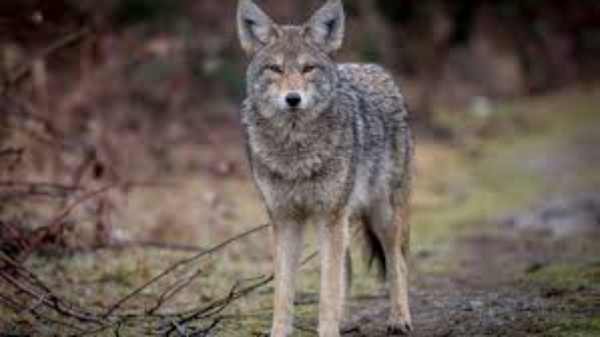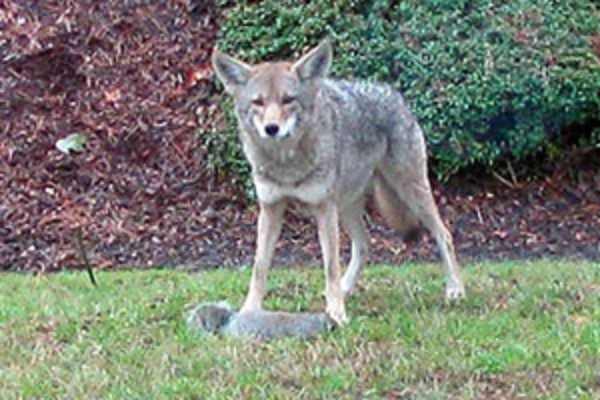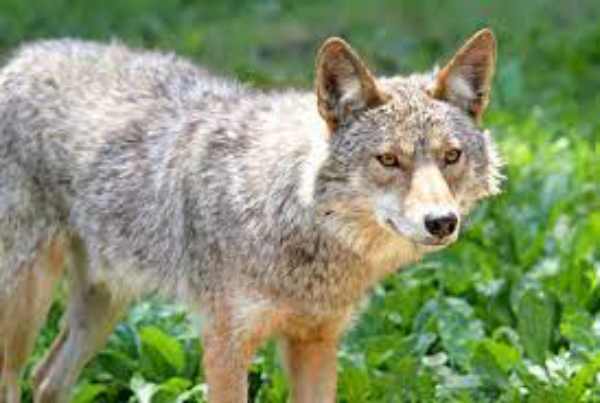In Oregon, one of the most fascinating and iconic species to observe is the coyote. These highly adaptable animals live across a wide range of habitats, from densely populated urban areas to sparsely vegetated deserts, and are seen nearly everywhere in the Beaver State. Coyotes are common sights around farms and ranches, as they love to prey on rodents. They also hunt larger animals such as deer or bighorn sheep, though sometimes they can be beneficial by helping to reduce rabbit populations that might otherwise damage crops. Coyotes often stay in packs, with males leading the way as they investigate their nightly hunting grounds.

Table of Contents
Habitat
Coyotes live across much of Oregon and are known for their vocalizations and adaptability. Native to the western United States, the sightings of the coyote have been seen in forests, chaparral and desert regions throughout Oregon. There are one species of coyote found along the Central Oregon coastline in rocky habitats as well as flat terrain areas up to an elevation of 3,000 feet. Coyotes usually inhabit open areas but will also take advantage of heavily wooded forests when searching for prey or possible den sites near rivers, streams or lakes. In Oregon, they can be spotted near brushy pastures, grass fields and even suburban settings.
Diet
Coyotes generally consume a very varied diet. They feed on small mammals such as mice and voles, but also enjoy eating fruits like berries and apples, insects, reptiles and ground-dwelling birds. Plant matter such as grass or even corn may also be taken advantage of when the opportunity arises. Deer carrion can be an important food source for these opportunistic animals. The diet of coyotes largely depends on the season and availability of different food sources. As they are nocturnal animals, coyotes are known to scavenge pastures at night as well as hunt during both day and night depending on their needs in order to survive.
Colour
The colour of coyotes in Oregon varies depending on location, as well as the time of year. Coyotes seen in mountainous regions tend to be much paler than those roaming around the cities. During the winter months, their coats lighten and become a white or greyish colour, due to their fur growing thicker to withstand the cold. In contrast, from early spring to late fall they have darker variations of grey, brown, and red throughout their grizzled fur. Some coyotes even have a yellow appearance because of the yellow colouring found in their underfur.

Size, Lifespan and Weight
The average size of these creatures is between four and six feet long, depending on their age and gender. These animals live anywhere from ten to thirteen years but some can reach nearly fourteen years in age. The average weight of an adult coyote is only 30 pounds but this varies again depending on the sex of the animal and which specific breed it belongs to.
Predators
In Oregon, they have many predators vying for their meals, such as larger animals like bears and mountain lions. They also need to contend with man-made threats like traps, cars, and poisons set out by ranchers who see the canid as a threat to their livestock. Even some birds act as predators of coyotes in Oregon, such as the red-tailed hawk or golden eagle. This combination of natural and man-made forces keeps coyote populations manageable in the state.
Reproduction
They reproduce once a year, between January and March. Males typically remain with their family group for the first year, and often even longer, while females will rarely leave once they hit maturity. The average litter size of coyotes is four to six pups, which are born blind, deaf and without fur for about three weeks. During this time period, coyotes rely on vocalizations such as yelping or barking to communicate and ward off predators. By six months old, the pups will begin learning hunting skills from their parents.

Hunting Coyotes in Oregon
Hunting coyotes in Oregon is an enjoyable experience for many hunters in the area. The process of tracking down these crafty animals is filled with excitement and potential reward. There’s nothing quite like creeping through the forest and trying to get close enough to spot one or hearing their howls echoing off distant hillsides. Hunters must be mindful, however, of the regulations surrounding coyote hunting; different regions have different laws and most states limit season lengths and total bag limits.
Shooting Coyotes in Oregon
Shooting coyotes in Oregon have become a popular activity in the state. Every year, a large number of hunters traverse the rugged landscapes of the state’s forests and deserts to pursue this activity. Every licensed hunter must be aware of the regulations set in place by the Oregon Department of Fish and Wildlife (ODFW). These guidelines provide an ethical framework for how coyote hunting should be conducted, ensuring both humane treatments as well as respectful care in regard to property. While protected by various laws, coyotes are still harvested to help keep their numbers maintained in order to protect livestock.

Killing Coyotes in Oregon
In Oregon, coyotes have become an increasingly common sight in densely populated areas across the state. To address this issue, Oregon Fish and Wildlife has proposed a bill to allow the killing of coyotes with firearms in an effort to reduce their numbers. Despite some support for this proposal, many animal rights activists have voiced strong opposition due to concerns regarding the potential indiscriminate nature of shooting firearms. This has raised debates over alternatives such as utilizing deterrents or stronger education methods instead of lethal removal, with little resolution yet offered.
Coyotes in Oregon City
Oregon City sits in the unique position of being one of the few populated areas in the US which still encounters coyotes on a regular basis. The local government and environmental groups have taken efforts to both educate citizens on their interactions with these creatures, as well as institute laws which promote healthy co-existence. This has been possible due to a mixture of wildlife preservation steps, including animal crossings and controlled hunting.
References:
https://thepredatorhunter.com/rules-for-hunting-coyotes-in-oregon/
https://www.fixr.com/costs/coyote-removal

Jeevan Kodiyan
An animal enthusiast with an interest in zoology, studying the behavior and activities of animals in the wild habitat. I work on research projects related to species conservation and endangered species protection. I also leverage zoology to become an educator, educating others about the importance of protecting our natural environment and the beauty of animals in their natural habitats.









